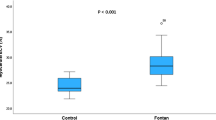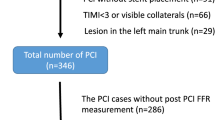Abstract
Background
Technetium-99m glucarate is a myocardial infarct-avid imaging agent. Recent conflicting and inconclusive reports have suggested that the agent may be taken up by ischemic but viable myocardium. The purposes of this study were (1) to determine conclusively whether there is Tc-99m glucarate uptake in ischemic viable myocardium and (2) to investigate the potential mechanisms for such uptake by studying components of ischemia, namely, low flow, hypoxia, and aglycemia.
Methods and Results
Rat hearts were isolated and perfused in a modified Langendorff preparation with a crytalloid perfusate. Tc-99m glucarate was studied in control (n = 6), low-flow (n = 5), hypoxic (n = 5), and aglycemic (n = 5) conditions. The experimental protocol consisted of 20-minute baseline (12 mL/min flow) and 20-minute treatment (low flow at 1 mL/min, hypoxia, or aglycemia), followed by tracer uptake (20 minute) and washout (20 minutes). Activity was monitored with a sodium iodide detector. The tracer was delivered continuously over a 20-minute uptake period. The injected dose was 150 μCi (5.6 MBq). Hemodynamics were monitored throughout. Triphenyltetrazolium chloride staining was used to assess myocardial viability. There was no evidence of myocardial necrosis. Low flow tended to delay tracer uptake compared with control for the first 10 minutes, but this did not reach statistical significance. Low flow increased end fractional retention significantly compared with control (mean ± SEM, 59.0% ± 0.9% peak vs 41.2% ± 1.4%, respectively; P < .05). Hypoxia resulted in a trend toward increased uptake; however, this was significant only at one early time point during the uptake phase. Retention in the hypoxia group was similar to control. Tc-99m glucarate uptake was significantly increased in aglycemia from 16 minutes to peak compared with control (1.36% ± 0.71% injected dose per gram vs 0.91% ± 0.37% injected dose per gram, respectively; P < .05). Aglycemia produced significantly higher end fractional retention compared with control (51.6% ± 1.8% peak vs 41.2% ± 1.4%, respectively; P < .05).
Conclusions
Tc-99m glucarate myocardial retention is increased in the setting of ischemia, even in the absence of necrosis. This increased retention is not due to hypoxia. Furthermore, the retention is only partially explained by tissue hypoglycemia. Thus low flow per se appears to have a role in this increased retention, probably as a result of delayed flow-dependent washout. (J Nucl Cardiol 2003;10:168-76.)
Similar content being viewed by others
References
Khaw BA, Atsuko N, O’Donnell SM, Pak KY, Narula J. Avidity of technetium 99m glucarate for the necrotic myocardium: in vivo and in vitro assessment. J Nucl Cardiol 1997;4:283–90.
Narula J, Petrov A, Pak KY, Lister BC, Khaw BA. Very early nonivasive detection of acute experimental nonreperfused myocardial infarction with 99m-Tc-labeled glucarate. Circulation 1997; 95:1577–84.
Yaoita H, Fischman AJ, Wilkinson R, et al. Distribution of deoxyglucose and technetium-99m-glucarate in the acutely ischemic myocardium. J Nucl Med 1993;34:1303–8.
Ohtani H, Callahan RJ, Khaw BA, et al. Comparison of technetium- 99m-glucarate and thallium-201 for the identification of acute myocardial infarction in rats. J Nucl Med 1992;33:1988–93.
Orlandi C, Crane PD, Edwards DS, et al. Early scintigraphic detection of experimental myocardial infarction in dogs with technetium-99m-glucaric acid. J Nucl Med 1991;32:263–8.
Beanlands RSB, Ruddy TD, Bielawski L, Johansen H. Differentiation of myocardial ischemia and necrosis by technetium 99m glucaric acid kinetics. J Nucl Cardiol 1997;4:274–82.
Mariani G, Villa G, Rossettin PF, et al. Detection of acute myocardial infarction by 99m-Tc-labeled d-glucaric acid imaging in patients with acute chest pain. J Nucl Med 1999;40:1832–9.
Johnson LL, Schofield L, Mastronfrancesco P, et al. Technetium- 99m glucarate uptake in a swine model of limited flow plus increased demand. J Nucl Cardiol 2000;7:590–8.
Yaoita H, Uehara T, Brownell AL, et al. Localization of technetium- 99m-glucarate in zones of acute cerebral injury. J Nucl Med 1991;32:272–8.
Ford WR, Clanachan AS, Hiley CR, Jugdutt BI. Angiotensin II reduces infarct size and has no effect on post-ischaemic contractile dysfunction in isolated rat hearts. Br J Pharmacol 2001;134:38–45.
Chopra P, Sabherwal U. Histochemical and fluorescent techniques for detection of early myocardial ischemia following experimental coronary artery occlusion: a comparative and quantitative study. Angiology 1988;39:132–40.
Rammohan R, Petrov A, Haider N, et al. Subnuclear localization of Tc-99m glucarate in necrotic myocardium [abstract]. J Nucl Med 1996;37:175P.
Khaw BA, Rammohan R. Tc-99m glucaric acid targets the nucleoproteins of acutely necrotic myocardium but cannot target myocardial cell death due to apoptosis [abstract]. Circulation 1999;100:I-310.
Khaw BA, DaSilva JS, Vora J, Boroujerdi M. Identification of adriamycin cardiotoxicity by two infarct avid agents: In-111 antimyosin and Tc-99m glucaric acid [abstract]. Circulation 1998;98:I-130.
Khaw BA, Petrov A, Vora JK, et al. Tc-99m glucarate is a marker of necrosis: it does not localize in adriamycin induced apoptotic myocardial injury [abstract]. J Nucl Med 1998;29:159P.
Bonte FJ, Parkey RW, Graham RT, Moore RT, Stokeley EM. A new method for radionuclide imaging of myocardial infarcts. Radiology 1974;110:473–4.
Khaw BA, Gold HK, Yasuda T. Scintigraphic quantification of myocardial necrosis in patients after intravenous injection of myosin-specific antibody. Circulation 1986;74:501–8.
Okada RD, Johnson G, Nguyen KN, et al. 99mTc-HL91, Effect of low flow and hypoxia on a new ischemia-avid myocardial imaging agent. Circulation 1997;95:1892–9.
Ballinger JR, Cowan DS, Boxen I, Zhang ZM, Rauth AM. Effect of hypoxia on the accumulation of Tc-99m-glucarate and Tc-99mgluconate by Chinese hamster ovary cells in vivo. J Nucl Med 1993;34:242–5.
Johnson G, Liu Z, Pak KY, Khaw B, Okada RD. Kinetics of 99mTc-glucarate in stunned, hibernating, and ischemic-reperfused myocardium with infarct. Circulation 2000;102:II-120.
Vural I, Narula J, Petrov A, Pak CKY, Khaw BA. Can Tc-99m glucarate also recognize diffuse myocardial necrosis? [abstract]. J Nucl Med 1995;36:47P.
Khaw BA, Petrov A, Narula J, Pak KY. Can the uptake ratios of Tc-99m-glucarate in acute myocardial infarction be affected by the glycemic state?. Biodistribution in fasted, non-fasted and insulin injection mice [abstract]. J Nucl Med 1999;40:186P.
Stanley WC. Cardiac energetics during ischaemia and the rationale for metabolic interventions. Coron Artery Dis 2001;40(Suppl 1):S3–7.
Young LH, Russell RR III, Yin R, et al. Regulation of myocardial glucose uptake and transport during ischemia and energetic stress. Am J Cardiol 1999;83:25H-30H.
Author information
Authors and Affiliations
Additional information
Supported in part by grants from the American Heart Association, the William K. Warren Medical Research Institute, and the Anne and Henry Zarrow Foundation.
Rights and permissions
About this article
Cite this article
Okada, D.R., Johnson, G., Liu, Z. et al. Myocardial kinetics of Tc-99m glucarate in low flow, hypoxia, and aglycemia. J Nucl Cardiol 10, 168–176 (2003). https://doi.org/10.1067/mnc.2003.1
Received:
Accepted:
Issue Date:
DOI: https://doi.org/10.1067/mnc.2003.1




